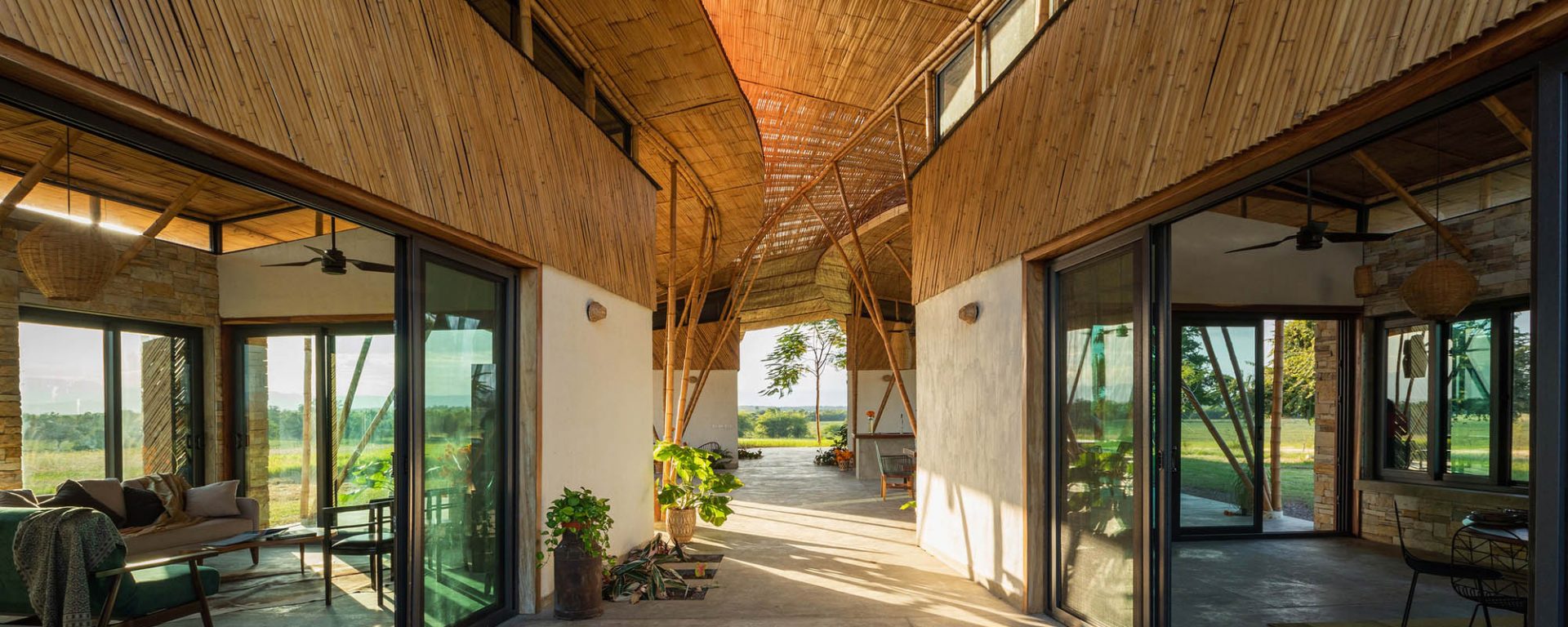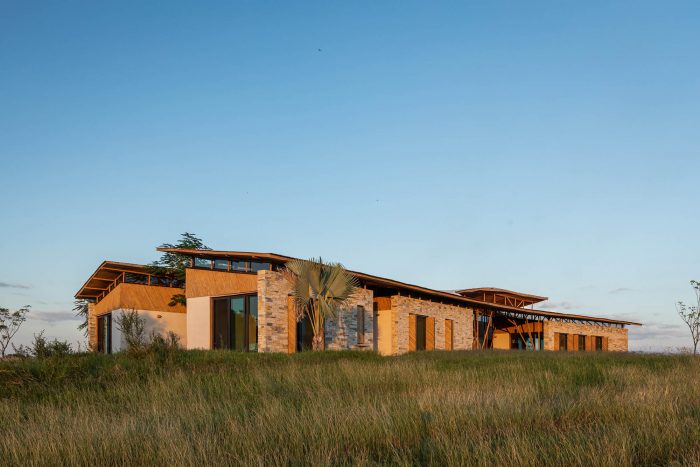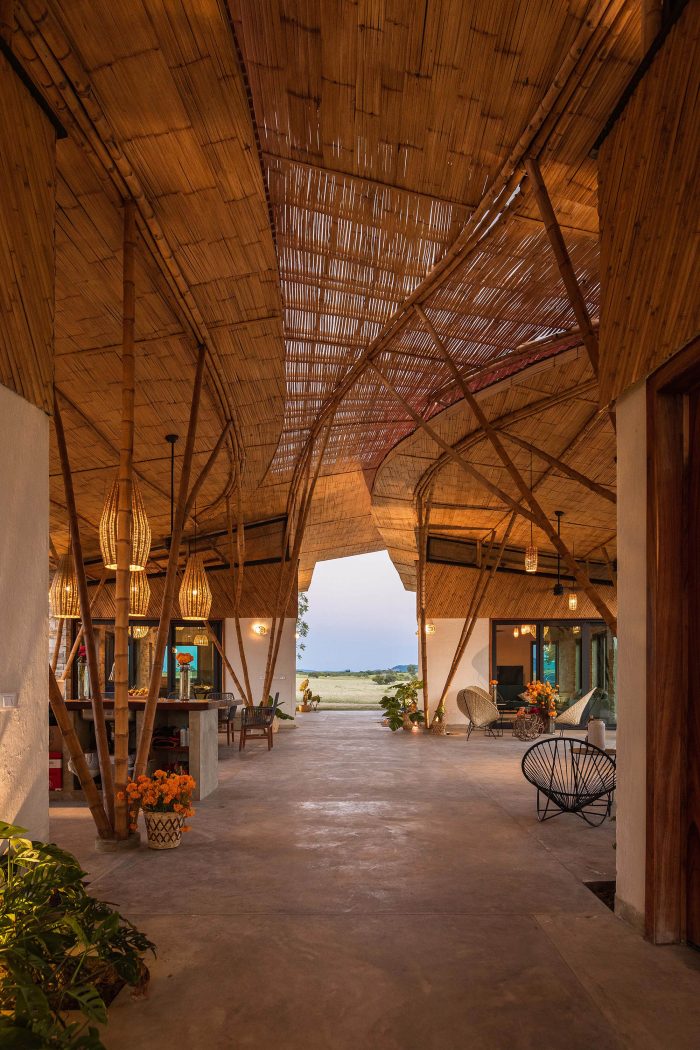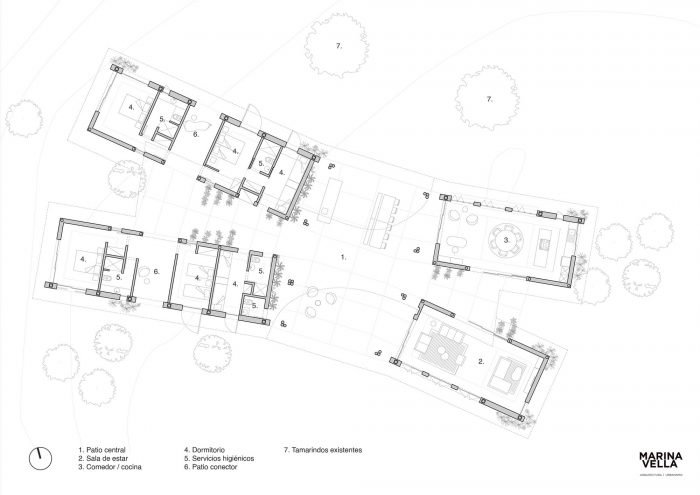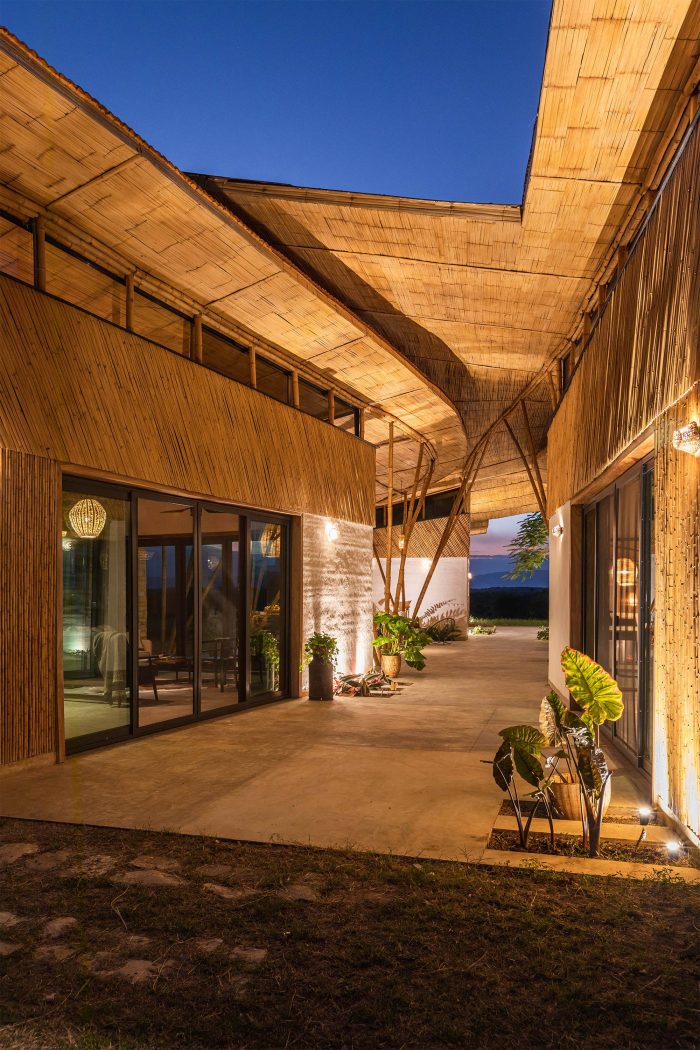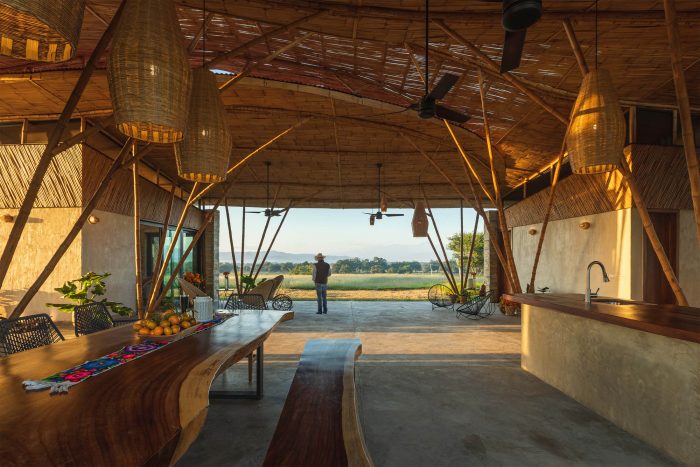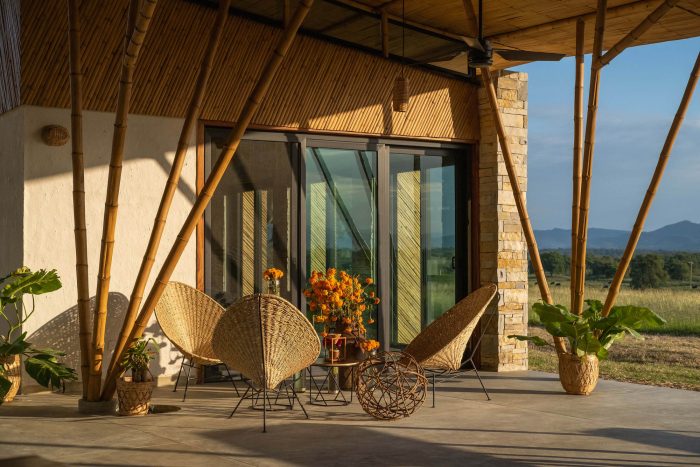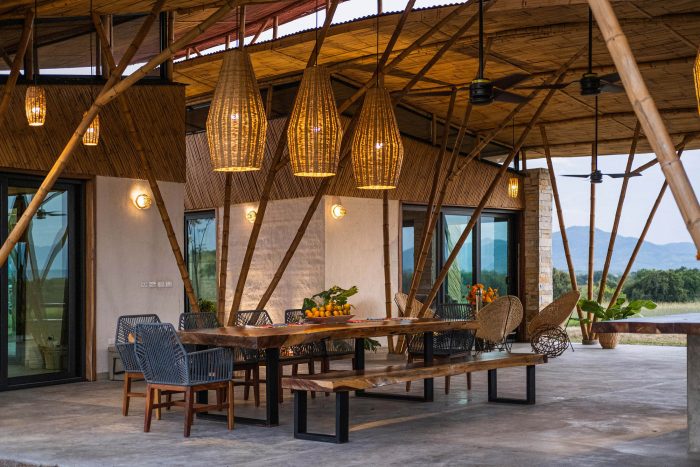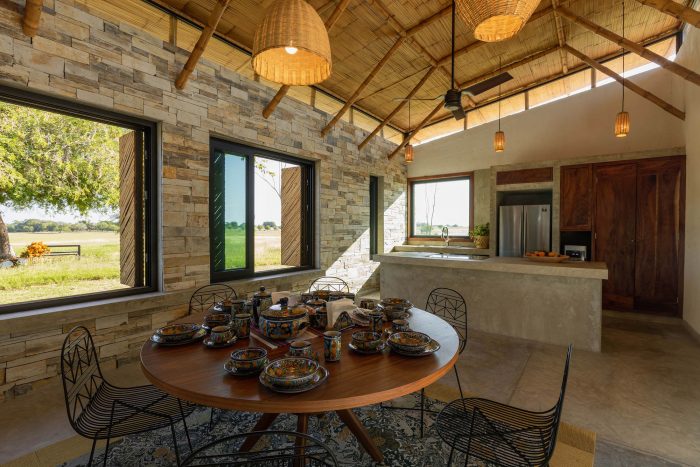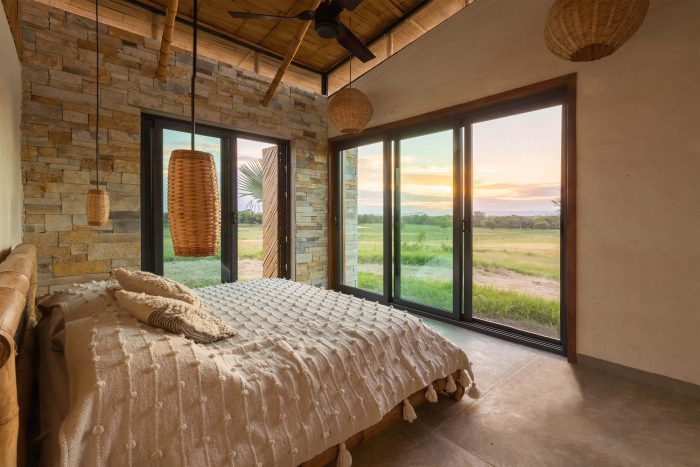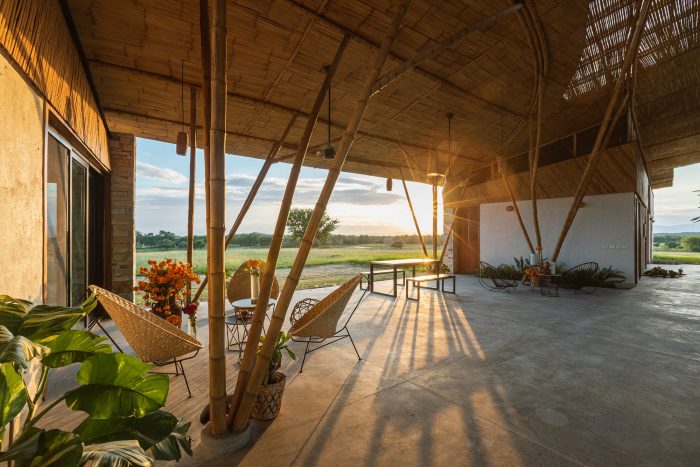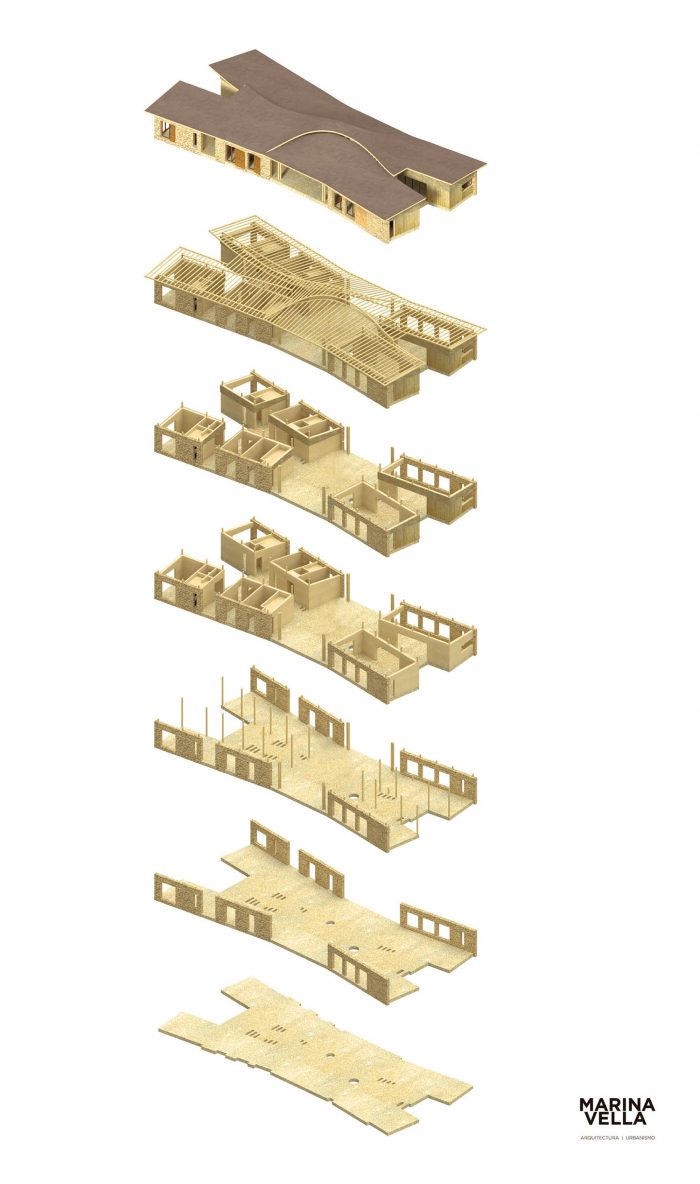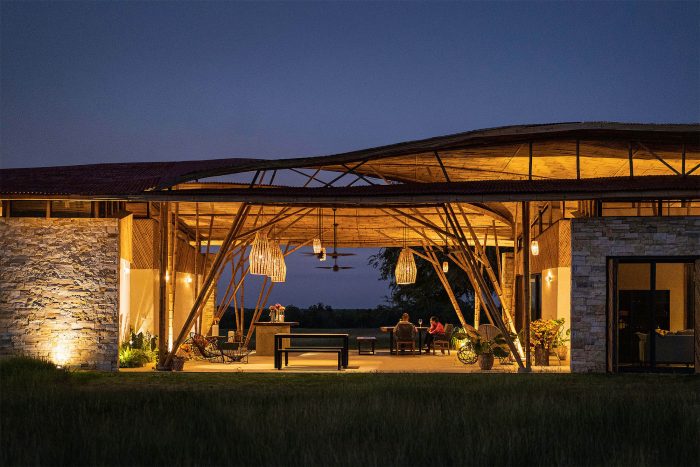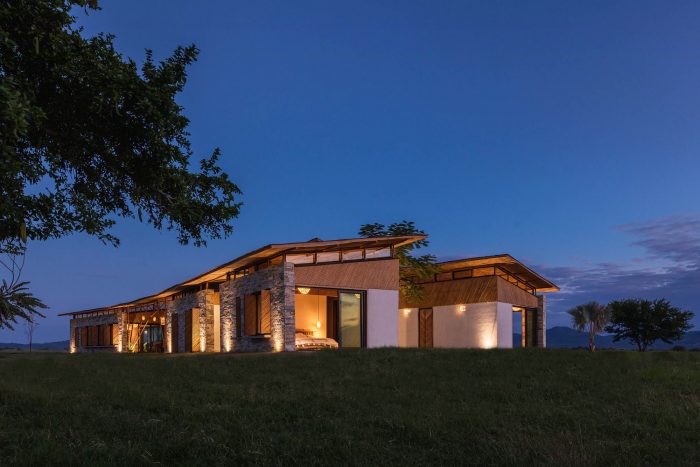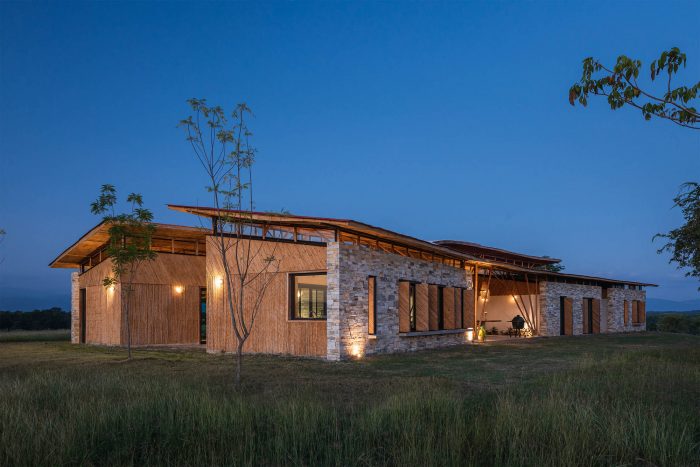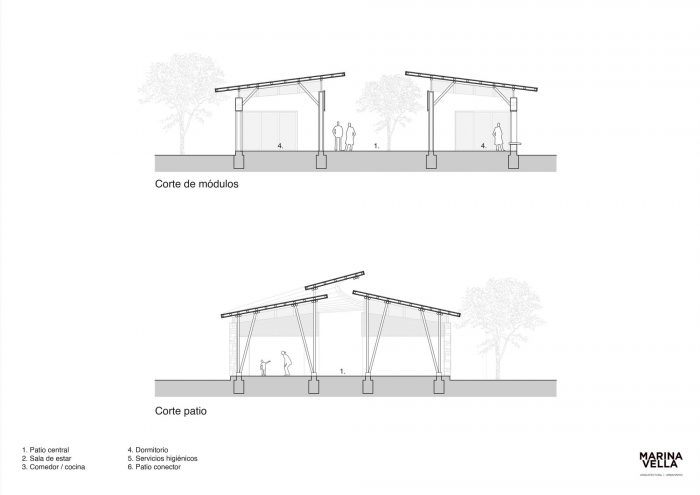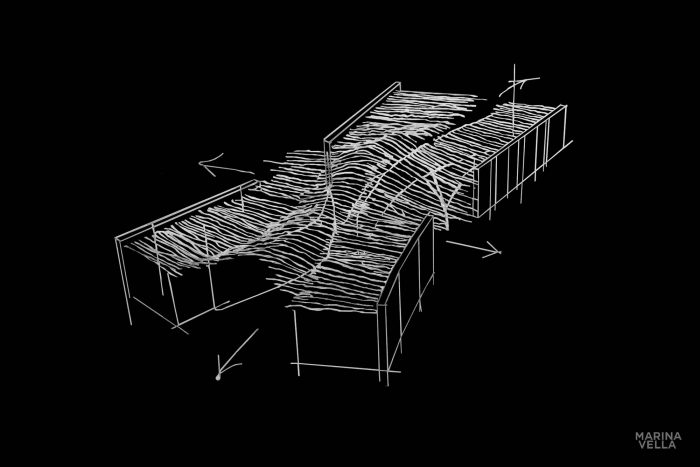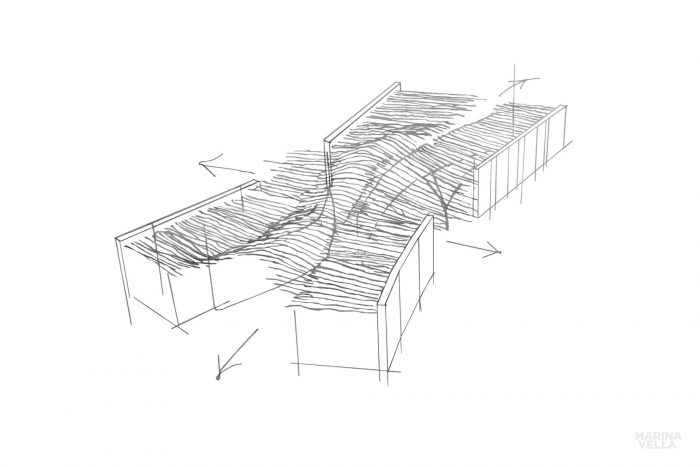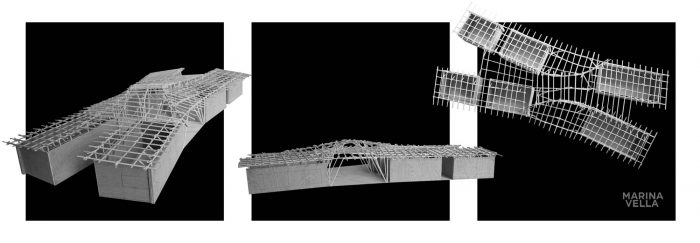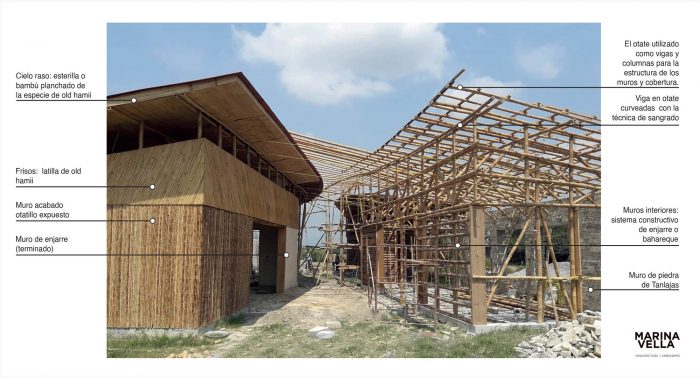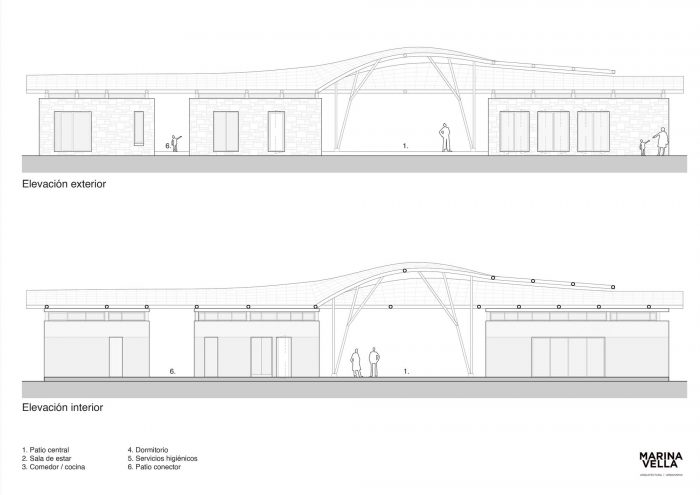位置。TRAVERSA HOUSE位于墨西哥圣路易斯波托西州四大地区之一的华斯特卡波托西的Tanlajas(Tan-地方/lajas-层层叠叠的石头)镇旁的一片广阔的养牛场内。其气候温暖湿润,平均温度高于18℃。科伊河穿过土地,在旺季时,河水溢出,形成泉水和喷泉。
Location. The TRAVERSA HOUSE is located in a cattle ranch in a vast area next to the town Tanlajas (Tan – place / lajas – stones in layers) in the Huasteca Potosi, one of the four regions of the Mexican State, San Luis Potosi. Its climate is warm and humid, with an average temperature higher than 18ºC. The Coy river crosses the land and in the high season, it overflows forming springs and fountains.
这个地区的人口是Teneek族,他们的乡土建筑被认为是Huasteca Potosina的文化遗产,因为他们使用的建筑材料,他们的建筑技术以及环境的保护理念。
The population of this area is of the Teneek ethnic group whose vernacular architecture is considered a cultural heritage of the Huasteca Potosina because of the building materials used, their construction techniques as well as the preservation concepts of their environment.
准则。TRAVERSA HOUSE的构思就像景观中一条狭长的带子,与周围的自然环境融为一体,有三个主要的准则。第一个是使用要求,它将其类型定义为业主和朋友参观和监督时的临时住房。第二个是在使用和重视Teneek乡土房屋的构造技术和材料的同时,实现空间上的现代建筑。同时,它必须符合工作室的建筑原则,尊重建设性的元素和关于该地区气候需求的背景研究。
Guidelines. Conceived as a long narrow strip in the landscape, integrating and blending itself with its natural surroundings, the TRAVERSA HOUSE has three main guidelines. The first one is the requirements of use which defines its type as temporary housing for the owners and friends when they visit and supervise the area. The second one is to achieve a spatial contemporary architecture while using and putting in value the constructive techniques and materials used by the Teneek vernacular housing. At the same time, it has to be in accordance with the studio’s architectural principles honoring the constructive éléments and the study of the context regarding the climate needs of the area.
启动。考虑到这些要求,TRAVERSA HOUSE以现有的tamarindo树、太阳的路径和风为出发点。根据这些主线,项目开始分解为4个模块,用于社交区和卧室区,用天井和循环轴系统衔接。由于用户的多样性,重要的是建立一个项目的空间组织,允许多个同时活动,避免视觉和听觉上的碰撞。倾斜的线条交叉并形成完整的和空旷的空间,设法利用景观和风的循环,构筑景观并产生通风和欢迎的空间。一个重要的项目目标是设计一个类似于树顶效果的屋顶覆盖,同时定义山线。
Startup. Taking into consideration these requirements the TRAVERSA HOUSE takes as its starting point the existing tamarindo trees, the sun’s path, and the wind. With these main lines, the program began decomposing in 4 modules for the social and bedroom zones, articulating it with a system of patios and circulation axis. Because of the diverse users, it was important to establish a spatial organization of the program that would permit multiple simultaneous activities avoiding visual and acoustic encounters. The inclined lines that cross and form full and empty spaces manage to take advantage of the views and the circulation of the wind, framing the landscape and generating ventilated and welcoming spaces. An important project goal was to design a roof coverage resembling the effect generated by the treetops and at the same time defining the mountain lines.
材料化。使用的材料是Tanlajas石头,当地的竹子 “guadua vellutina “被称为Otate,(被认为是最灵活和最有弹性的物种之一,因为竹环的紧密性),和地面的土。为了保护建筑不受潮湿的影响,外墙使用了石材。为了保持生活空间的清新和舒适,在内墙使用了一种被称为 “enjarre”(bahareque–生物建筑中的绿色建筑)的建设性系统。屋顶与墙体分离,在房间内产生自然交叉通风,从而避免任何机械系统。
The materialization. The materials used are the Tanlajas stones, the local bamboo “guadua vellutina” known as Otate, (considered one of the most flexible and resilient species because of the closeness of the bamboo rings), and the earth of the ground. To protect the building from humidity stone was used in the external façades. To keep the living spaces fresh and nice, a constructive system known as “enjarre” (bahareque – green building in bio-construction), was used in the interior walls. The roof coverage is separated from the walls to generate natural cross ventilation in the rooms and so avoiding any mechanical system.
在屋顶覆盖物的建设中,使用了平行系统,目前和本色,如弯曲的梁与 “sangrado “技术和使用脚手架和模板的结构。垫子或熨烫的竹子从物种老hamii被用于天花板和竹筒的门楣。木制品使用的是Orejon木材。所有材料都是从瓦斯特卡地区采集的。
In the construction of the roof coverage parallel systems were used, present and vernacular, like curving the beams with the “sangrado” technique and the use of scaffolding and formwork in the structure. Mat or ironed bamboo from the species old hamii were used for the ceiling and bamboo canisters for the friezes. Orejon Wood was used in the woodwork. All materials were harvested from the Huasteca area.
建筑师:Marina Vella Arquitectura
面积:480平方米
年份:2020年
照片:DC fotografia arquitectonica
厂家:CHIQUIHUITE Artesanias, ORVEN, SOLIDOM
建筑设计:Marina Vella Arquitectura
结构设计师:colectivo Kima, Andrea Cesar y Ricardo Ortiz
竹结构:colectivo Kima、Andrea Cesar和Ricardo Ortiz
土建工程:Silvia Olvera Azuara
工匠:Vicencio Estuardo
结构:Leonardo Rodríguez
合作者:Mauricio Jumpa, Adam Zet, María José Gaitán, Melissa Vargas, Rafael Díaz Santana Sainz, Anuar Guijarro Martínez, Santos Roberto Mateo Silvestre, Gabriela Luna, Yahir Hernández
城市:Tanlajas
国家:墨西哥
Architects: Marina Vella Arquitectura
Area: 480 m²
Year: 2020
Photographs: dc fotografia arquitectonica
Manufacturers: CHIQUIHUITE Artesanias, ORVEN, SOLIDOM
Architectural Design:Marina Vella Arquitectura
Structural Designers:colectivo Kima, Andrea Cesar y Ricardo Ortiz
Bamboo Construction:colectivo Kima, Andrea Cesar y Ricardo Ortiz
Civil Work:Silvia Olvera Azuara
Craftsman:Vicencio Estuardo
Structure:Leonardo Rodríguez
Collaborators:Mauricio Jumpa, Adam Zet, María José Gaitán, Melissa Vargas, Rafael Díaz Santana Sainz, Anuar Guijarro Martínez, Santos Roberto Mateo Silvestre, Gabriela Luna, Yahir Hernández
City:Tanlajas
Country:Mexico

